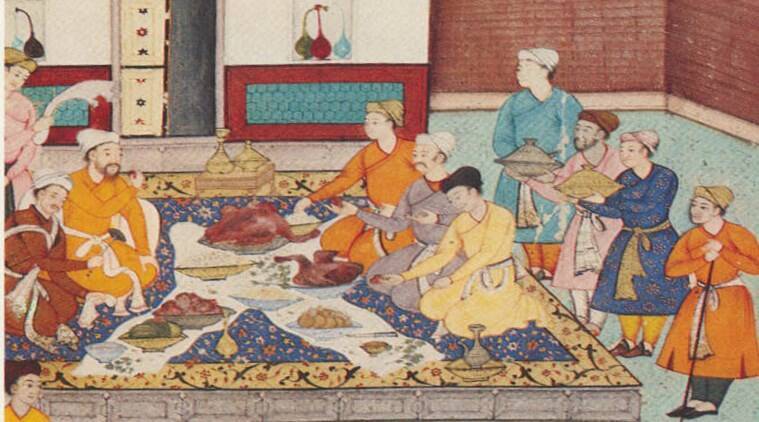
Mughlai cuisine takes “food fit for a king,” to a wholly different level. Just by looking at Mughal architecture, one wonders how those domes and forts would have been in the olden times, how rich would the fabric of the clothes worn by people who roamed in them must have been, how sparkling the diamonds of their jewelleries, and how good the taste of their food.
If you ever wondered what the Mughals ate, here is a list of the dietary habits of Mughal kings, from Babur to Bahadur Shah Zafar.
Babur
Although Babur was fascinated by the variety of spices available in the subcontinent, he was so nostalgic of the food of his native place; he disliked most things in his new habitat. The first emperor was, what one would call, a food snob. He missed grapes and muskmelons, fruits which grew in abundance in Fergana, the province where he was born. As a result, Babur, established ways to bring fruits from the land of his origin to the land of which he was now the emperor. Historian Lizzie Collingham writes that the taste of a melon made Babur so homesick that he started weeping while eating it.
Humayun
Humayun was driven out of India by Sher Shah Suri. He took refuge in Persia, where the Indian cooks devised a dish made of peas and rice for him, the popular khichdi. After he came back to the country, he brought with him Persian cooks who infused Persian cuisines with local food. This means that a lot of saffron and dry fruits were used in many dishes. Humayun also liked drinking sherbet.
Akbar
Akbar was fonder of the food in the subcontinent. It is said that he would go on a completely vegetarian diet for many days. He, like his father, usually ate khichdi during such phases. During his reign, mutton dishes like Murgh Mosallam became popular.
Jahangir
Jahangir loved eating and drinking more than all other Mughal emperors. He liked mangoes better than Kabul fruits. His wife, Noor Jahan, a really powerful presence in the court, is said to have created her own blends of wine and unique, colourful dishes.
Shah Jahan
Shah Jahan, like most Mughal emperors loved mangoes. He also said to have drunk water only from the Yamuna River. Shah Jahan’s kitchen ingredients were fetched from gardens which grew fresh fruits and vegetables. Legend has it that the spicy meat dish, nihari, was actually devised during his reign.
Aurangzeb
Compared to other Mughal emperors, Aurangzeb was very austere in his food habits. He mostly ate a vegetarian diet and there is an account of him being very fond of a dish called Qubooli. Made of rice, Bengal gram, and dried fruits, this dish is said to have been Aurangzeb’s favourite.
Bahadur Shah Zafar
Legend has it that whenever Bahadur Shah Zafar dipped his spoon in his food, it was announced to his poor subjects standing outside that the emperor had begun his meal. Subsequently huge quantities of rice were distributed among them. He is said to have been fond of sohan ka halwa and deer meat (venison).
















